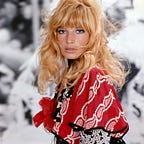Rameau is arguably much better known as a composer of keyboard music than operas. His operas don’t get staged often outside of France, mainly because of what they require — a fully-staged show has to have a chorus, frequent set-changes, ballet corps, full orchestra, original instruments and performance expertise. For the state-funded Académie Royale de Musique of Rameau’s day, such demands weren’t a particular challenge. But by today’s standards, tragedie en musique is really something that would enthrall your average musicologist more-so than your average conductor. As a consequence, performances of his operas are too often the pet-projects of French nationalism.
That said, Rameau is unfairly maligned, because his music is good. Damn good. As in, indispensable-to-the-cultural-heritage-of-humanity-good. As a music theorist, Rameau was concerned primarily with how his music could be the formal expression of his theories of tonality. Rameau wanted to demonstrate what could be musically possible. Thus his operas are full of pleasing, yet for his time, audacious experiments in orchestration, timbre, and harmonics.
These experiments weren’t always well-received, however. At the time of its first performance in October of 1733, Rameau’s first opera, Hippolyte et Aricie, received a warm reception at the Academie but was later lambasted by conservative critics, like one in the Mercure Galant who called it “baroque” — too ornate to the point of disfiguring the composer’s intentions. (The word “baroque” would later be applied to music from Rameau’s period as a whole). The musical landscape to which the French had been accustomed had largely remained unchanged for the past fifty years after the death of Jean-Baptiste Lully, who worked under Louis XIV as the founding composer of the Academie. None of Lully’s successors until Rameau had the audacity or imagination to evolve the art past the frameworks he set out for Louis XIV and his court, although there were some changes: the allegorical prologue at the beginning of a traditional French tragédie lost its propagandistic qualities as Louis XIV aged.
That said, Rameau was not as radical to change the form of a tragédie. Like the tragedies of old, Rameau and his librettist Pellegrin wrote a five act opera with a prologue that set the tone and action. Their source took inspiration from Greek mythology — Corneille’s Phédre, a story of illicit attractions, mental illness, and familial betrayal. And in each act, there are major choral movements and divertissements, or dance numbers, which break up the action.
Otherwise, the music sounds much more modern and nothing like the quasi-renaissance sounds of Lully. Instead of the parent (Theseus) turning on the child (Hippolytus), the “child” (Rameau) turns on the “parent” (Lully). The music of each act is a rich Klangwelt of its own — Diana’s temple is suggested through quiet, solemn flutes, the fires of the underworld through racing scales on violins and oboes, the pleasures of the hunt through natural horns, and a bucolic scene through a musette — a miniature bagpipe which is powered by a pedal attached to the player’s side. Most interesting is the Trio des Parques at the end of act two, where the Three Fates predict the discord Theseus will find once he returns home from the underworld. The clash between the strings which leap and groan underneath the mournful, mocking voices of the Fates proved too difficult for the premiere ensemble.
Other highlights to the work include the magnificent solo pieces. Aricie’s aria “Temple sacré”, performed by Anne-Maria Mazzarella, is deeply melancholy, with soaring counter melodies on the flutes (“…contre un amour trop malheureux!”) and a beautiful upwards motion of notes inegales, giving the song a stately aura perfect for a princess forced into a vow of chastity. The accompanied recitative sounds like it came from a composer living 50 years after Rameau — its evocative qualities, of not only Theseus’ supplication (“Puissant maître des flots..”) but also the magic taking effect through the stirring of bassoons and cellos (“mais du courroux l’Onde s’agite…”), as he asks his father Neptune to punish Hippolytus for what he thinks was the attempted rape of his stepmother. But the role that stands out so beautifully in Rameau’s debut opera is that of Phaedra, performed spectacularly by Lorraine Hunt. Her airs are among the most emotionally affecting in the opera, representing her inner turmoil almost perfectly. In her lament “Quelle plainte en ces lieux m’apelle?” she imagines divine justice for her desires (“Les enfers s’ouvrent sur mes pas!”), portraying an earthquake through thundering which relax into thunderous semibreves as she resolves to kill her self — the only way by which she may pay for the crime of Hippolytus’ death.
When I listen to Hippolyte et Aricie, I hear not only a sublime work of art, but the first breaths of musical modernity. Rameau’s innovations might not shock and surprise as much as they did the French nobility of the 1730’s, but relative to his predecessors, Rameau’s music sounds much more natural. This is the point of the avant-garde — to accustom the senses to new ideas so that three hundred years hence, audiences will ask themselves “why did everyone get up in arms about this?”
